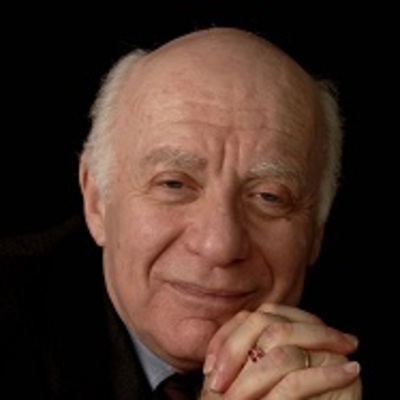Jacqueline Charles
September 13, 2024

Jose Iglesias/jiglesias@miamiherald.com
The West African nation of Benin is supposed to be a critical partner in the multinational security mission helping Haiti fight violent gangs — pledging the single-largest force of 1,500 to 2,000 soldiers, who also would be the only native French-speakers enlisted in the campaign.
But now the nation’s deployment plans appear to be on hold. At issue is who Beninese troops, once deployed to Haiti, will be answering to and whether the international effort to stabilize and secure the country for elections should be carried out by police or military personnel.
“Our position and our commitment remains the same, to help Haiti,” Benin Foreign Minister Shegun Adjadi Bakari told the Miami Herald in an interview. “But since the beginning …we said clearly, what Haiti needs is not a police mission. We believe that we need a military mission in Haiti to fight against gangs, restore the security in the country and restore the stability, which is a prerequisite for any election.”
The participation of Benin, where the population speaks French like many Haitians, is considered a key to the success of the mission. Its concerns about the rules of engagement recently came up in a briefing with congressional foreign affairs staff. Some congressional staff have been concerned about the pulling of resources by the Biden administration from strained areas of the globe to put out fires in other areas.
Islamic State and al Qaeda militants, for example, are currently spreading violence across West Africa, and the Pentagon has turned to coastal countries such as Benin and others in the region, to house U.S. forces and assist U.S. counterinsurgency efforts after American soldiers over the summer were forced to withdraw from Niger.
Benin first offered to join the Multinational Security Support mission in February amid calls from the Caribbean Community for more Francophone nations to join the effort after the United Nations agreed to the deployment of foreign forces to help the Haitian national police dismantle armed gangs controlling most of the capital.
Kenya had volunteered to lead the effort and agreed to deploy 1,000 of its police officers. However, the effort was delayed due to court challenges in Nairobi and funding issues in Washington. Still, Washington was able to amass a list of countries to volunteer troops to what it continuously touted as a police-led security mission. Those countries The Bahamas, Bangladesh, Barbados, Belize, Benin, Chad, Jamaica and most recently, Guatemala.
Of those, the Kenyans were the first to deploy. The first contingent of the 400 Kenyan police officers began arriving in late June. On Thursday, they were joined by 25 Caribbean security personnel including members of the Jamaican military and police force, and two members of Belize’s military.
In welcoming the Caribbean contingent, Godfrey Otunge, the Kenyan force commander and a policeman, said the presence of the Caribbean forces “will enhance the synergy” of the ongoing operations between the Multinational Security Support mission and the Haiti National Police.
Until now, both groups have struggled to make a significant impact against the armed gangs, which have grown even more emboldened amid the mission’s lack of resources, which include a lack of security personnel, equipment and financing.
Bakari said Benin has several concerns about the mission, which the government shared with partners from the onset. Among them was about the command structure, which was voiced the minute it offered to contribute between 1,500 to 2,000 military soldiers.
“They came back to us and said are you ready to send your military right now? We said, ‘Yes. But you cannot ask the military to be led by policemen,’ ” he said. “It hasn’t happened anywhere in the world. You need the military to command military people.This is where we stand today, we said ‘We cannot send our military persons in Haiti to be led by policemen coming from Kenya.’ ”
The State Department did not respond to a request for comment.
This is not the first time the question of who is better equipped at taking on Haiti’s armed gangs has come up. A confidential U.N. document obtained by the Herald ahead of Kenya’s pledge to lead the effort suggested that the international armed force could consist of a mix of military and police units, but must have the muscle, assets and intelligence capabilities necessary to fight heavily armed kidnapping gangs.
Bakari said Benin raised this very idea in its own conversations, suggesting that the security mission be a mix of army and police, or just army.
“All of us know that it is impossible for policemen to solve this issue,” he said. “They don’t know how to do this kind of operation; it’s a pure war, we know that.”
He also raised another concern, one that also help lead to the decision by Canada not to take the lead despite heavy courting by the United States to do so.
“They should understand us also, how can I send my people to Haiti and they will be shot at? What will I tell my constituents?” Bakari said.
While some in Washington view the uncertainty around Benin as a blow to U.S. efforts to securing Haiti enough for the country to be able to hold long-overdue general elections next year, Bakari said he remains hopeful that his nation can keep its commitment to the troubled Caribbean country that not only shares the French language but other cultural touchstones.
There is a diplomatic meeting with U.S. Secretary Antony Blinken later this month, he said, where Benin plans to once more raise its concerns.
The U.S. is the largest financial contributor to the Kenya-led Multinational Security Support mission, providing more than $300 million toward its operations and the construction of a base near the international airport in Port-au-Prince.
Despite the largess, there still isn’t enough money to support the 2,500-security personnel it who are expected to field the operation. Concerns are also growing that while the current funding, including $84.5 million in a U.N.-controlled Trust Fund, is enough to support the troops currently employed, funding will soon run out by early next year.
To address the funding and resource issues, the U.S. plans to push for more funding during the upcoming U.N. Genera Assembly that begins on Tuesday. It is also pushing to transform the non-U.N. mission into a formal U.N. peacekeeping operation. Along with Ecuador, the U.S. is floating a resolution among members of the Security Council for a year’s extension on the mandate of the current mission until October 2025, and for planning to begin on transforming it into a peacekeeping operation.
As a peacekeeping mission, funding would come from member state assessed contributions, and not voluntary contributions. It would also have assets like helicopters and a hospital capable of doing surgeries, which doesn’t currently exist.
But for any of this to happen, the U.S. will first need to convince U.N. Secretary-General António Guterres that a formal peacekeeping mission is the way to go, and then it will have to ensure that neither Russia nor China vetoes the idea when the resolution comes up for a vote on Sept. 30, two days before the mandate expires.
“I believe at some point our partners will hear us and they will understand our position and what we are asking for,” Bakari said.
“Our position is simple,” he added. “We are ready. Our people are trained, they have all of the clearances but at the same time the United States, Canada, France and other countries, they have to commit in terms of financing.”










